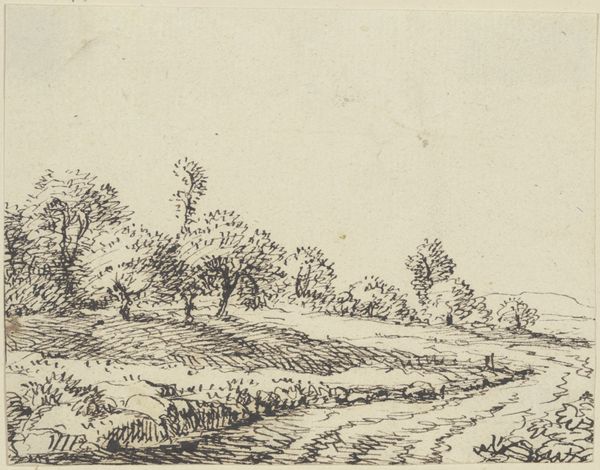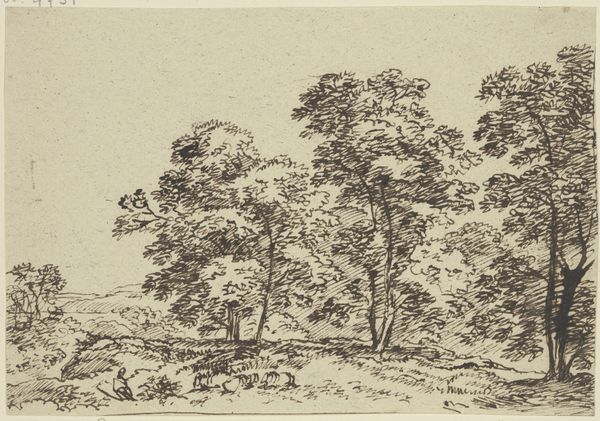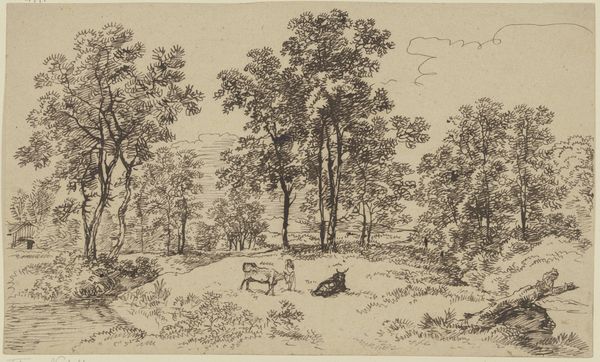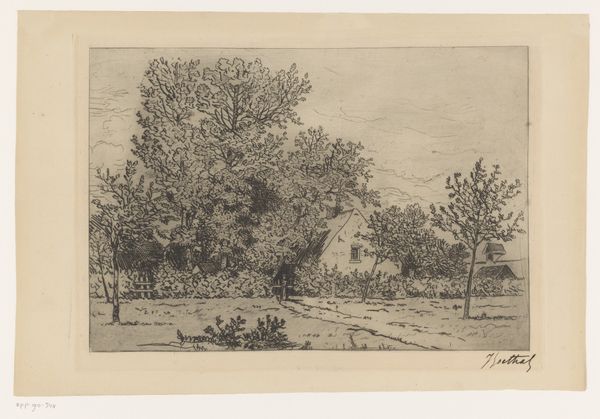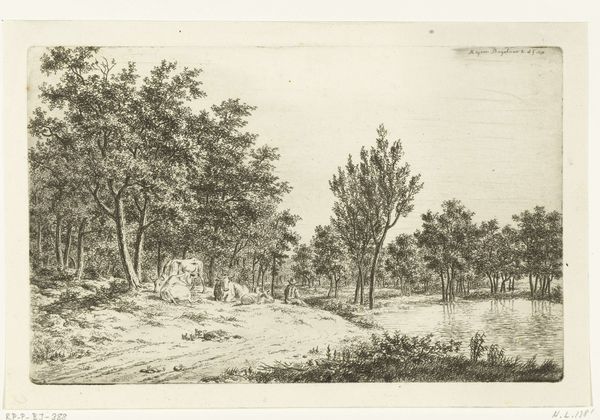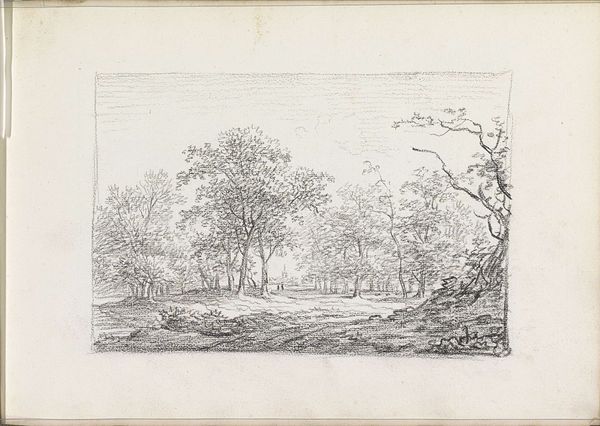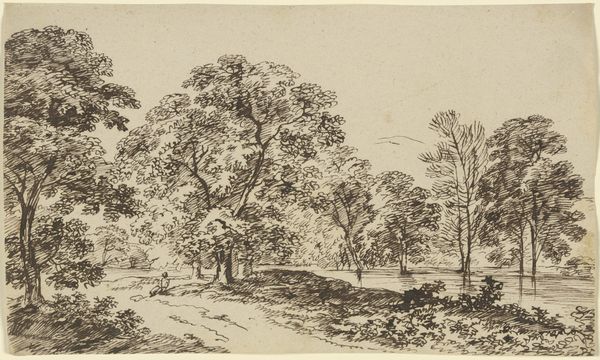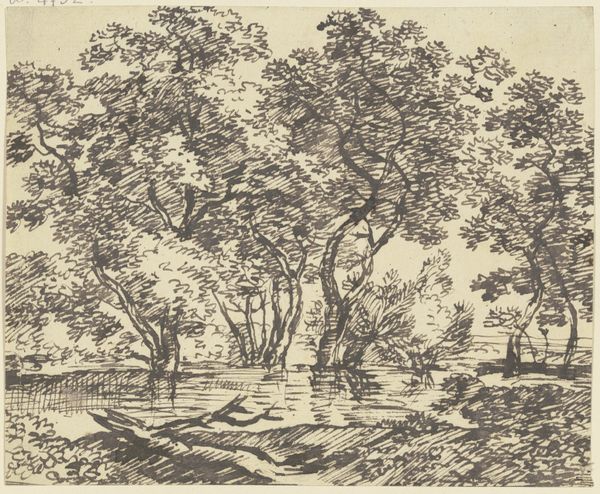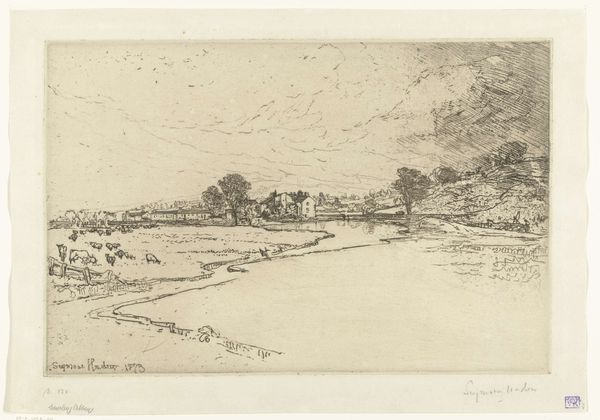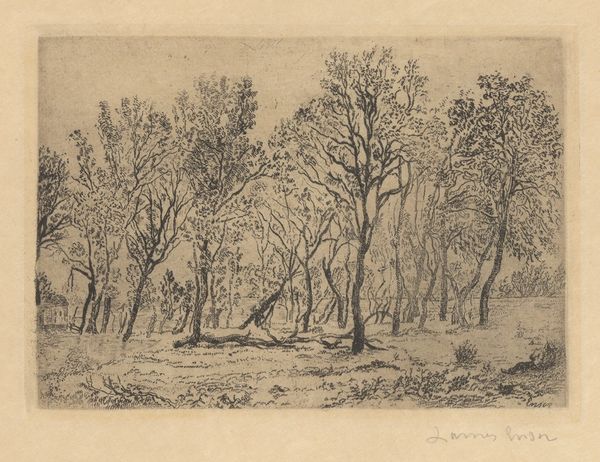
drawing, etching
#
drawing
#
impressionism
#
etching
#
landscape
#
etching
#
realism
Copyright: Public Domain: Artvee
Editor: Here we have James Ensor's "The Orchard," an etching from 1886. It strikes me as rather bleak for a landscape. The starkness of the etching process contrasts sharply with the lushness I’d expect from an orchard. What’s your perspective on this piece? Curator: That tension you’re picking up on is crucial. Think about 1886, a period of intense social upheaval and burgeoning anxieties around industrialization. Ensor, deeply engaged with the burgeoning avant-garde, might be using this seemingly simple landscape to explore a loss of innocence, a critique of pastoral ideals. Do you see how the almost frantic lines contrast with the serenity orchards typically evoke? Editor: I do, now that you point it out. The church tower in the background seems almost menacing rather than comforting. Curator: Exactly! And that placement isn't accidental. Consider the power structures inherent in 19th-century Belgian society—the church, the state, the burgeoning capitalist class. Ensor often subtly embeds these critiques within his work. He lived in Ostend, a city grappling with rapid change, and this etching becomes a commentary on the encroachment of these forces on traditional ways of life. Is this landscape celebrating nature, or mourning its loss? Editor: So, it’s less about the trees themselves and more about what they represent in this broader societal context. The etching becomes a way of questioning progress. Curator: Precisely. Ensor compels us to interrogate whose progress, whose landscape, and at what cost? What seemed like a simple scene actually becomes a complex reflection on identity, place, and power. Editor: This has totally changed how I view the piece. Thanks for making me look beyond the surface. Curator: My pleasure. Art should always spark dialogue, especially when challenging our own preconceived notions.
Comments
No comments
Be the first to comment and join the conversation on the ultimate creative platform.
